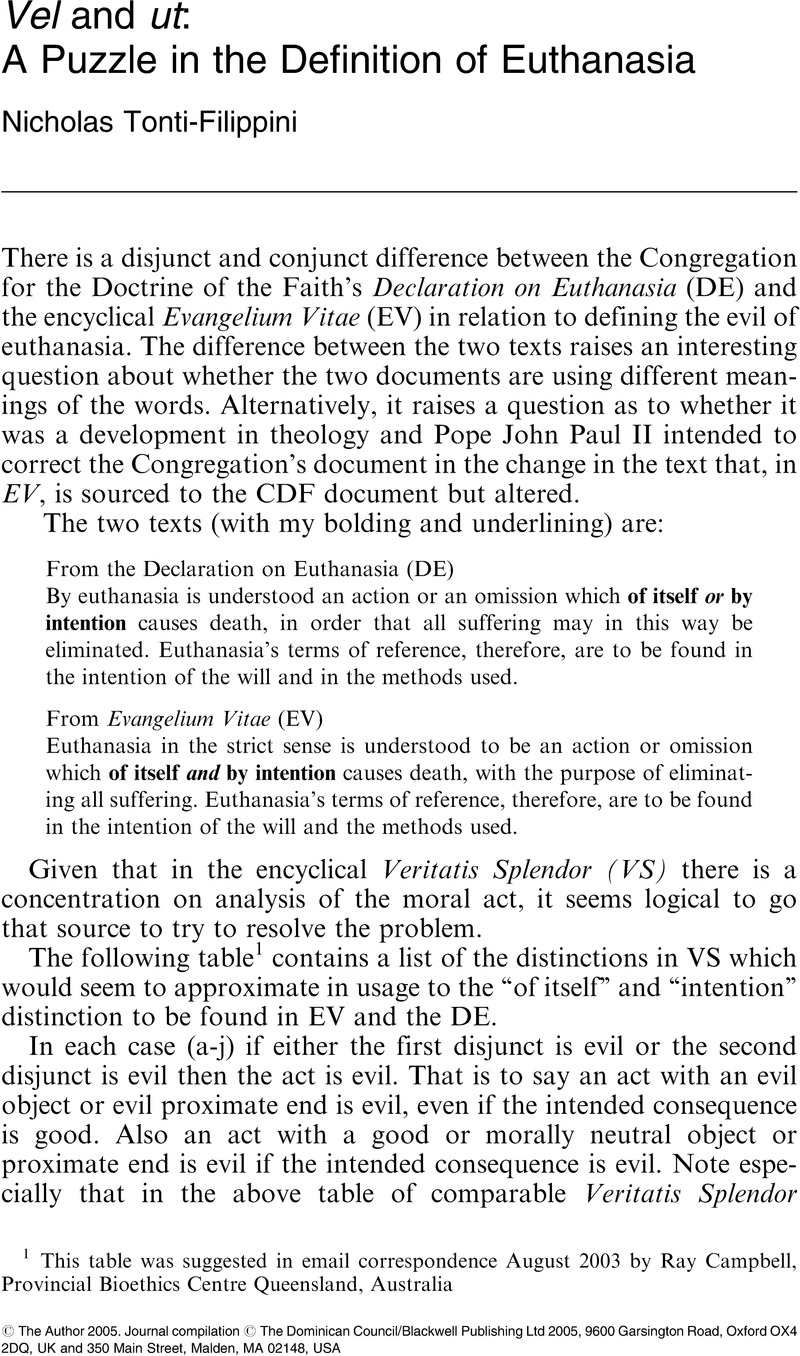No CrossRef data available.
Article contents
Vel and ut: A Puzzle in the Definition of Euthanasia
Published online by Cambridge University Press: 01 January 2024
Abstract

Information
- Type
- Original Articles
- Information
- Copyright
- Copyright © The Author 2005. Journal compilation © The Dominican Council/Blackwell Publishing Ltd 2005, 9600 Garsington Road, Oxford OX4 2DQ, UK and 350 Main Street, Malden, MA 02148, USA
References
1 This table was suggested in email correspondence August 2003 by Ray Campbell, Provincial Bioethics Centre Queensland, Australia
2 This explanation was offered to us by Bishop Anthony Fisher OP in correspondence 2/1/04
3 cf. William May in email correspondence August 29 2003
4 Summa Theologica 2–2, Q. 64 Art 7
5 Veritatis Splendor n. 78
6 Ibid.
7 Pope John Paul II Evangelium vitae Encyclical addressed to the Bishops, Priests and Deacons, Men and Women religious, lay faithful and all People of Good Will on the Value and Inviolability of Human Life 25th May 1995, n. 65.
8 Pope Pius XII, Address to an International Congress of Anaesthesiologists, November 24, 1957.
9 W.Daniel Doty and Robert M Walker “Medical Futility”Clinical Cardiology, Vol 23 (Suppl, II) 2000.

